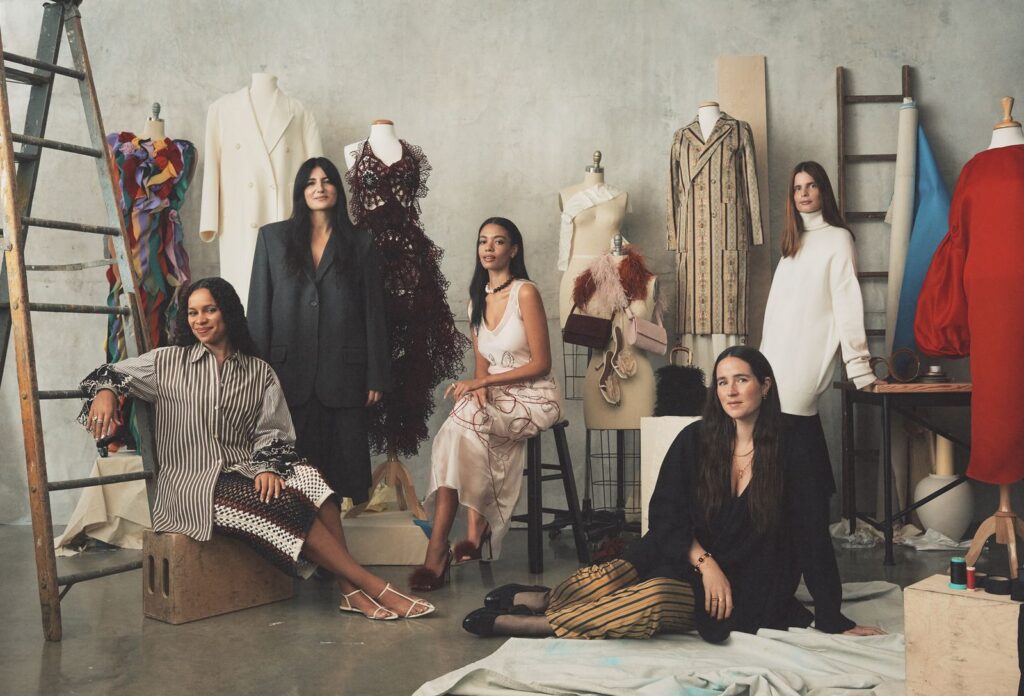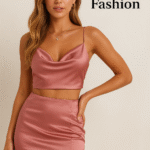Fashion is more than just clothes—it is art, identity, and culture stitched together. At the heart of this vibrant industry stands the fashion designer, a creative visionary who brings ideas to life through fabric, color, and form. From sketching outfits on paper to sending models down the runway, fashion designers shape how the world dresses and expresses itself.
What is a Fashion Designer?
A fashion designer is a professional who creates clothing, footwear, and accessories. They are responsible for designing outfits that balance creativity, practicality, and market demand. Designers can work for luxury fashion houses, retail brands, or even start their own labels.
Their work involves sketching designs, selecting fabrics, studying trends, and collaborating with manufacturers. A good designer is both an artist and a problem solver—someone who understands aesthetics as well as the business side of fashion.
What Does a Fashion Designer Do?
The daily tasks of a fashion designer vary depending on their role and workplace, but generally include:
- Researching trends: Staying updated on colors, fabrics, and global fashion movements.
- Sketching designs: Creating fashion designer drawings and digital illustrations of new outfits.
- Selecting fabrics and materials: Choosing textures, patterns, and trims to bring ideas to life.
- Creating prototypes: Working with pattern makers and seamstresses to develop samples.
- Collaborating with teams: Working with marketers, photographers, and retailers.
- Showcasing collections: Presenting designs at fashion shows, exhibitions, or online platforms.
This role requires both creativity and technical expertise.
How to Become a Fashion Designer
Many aspiring creatives dream of breaking into the fashion industry, but becoming a fashion designer requires persistence, skill, and training. Here’s a step-by-step guide:
- Get the right education – While natural talent matters, many pursue degrees in fashion design, textiles, or fine arts.
- Learn technical skills – Mastering fashion designer drawing, computer-aided design (CAD), and sewing is crucial.
- Build a portfolio – A strong collection of sketches and completed outfits is key to showcasing your talent.
- Gain experience – Internships at design houses or fashion retailers provide industry insights.
- Network – Building relationships with professionals, stylists, and manufacturers can open career doors.
- Stay updated – Fashion evolves constantly, so studying current and historical trends helps designers stay relevant.
Fashion Designer Education Requirements
To succeed, most fashion designers pursue formal education. Common requirements include:
- Bachelor’s Degree in Fashion Design (4 years)
- Courses in illustration, textiles, garment construction, CAD, and marketing
- Optional Master’s Degree for specialization (e.g., luxury fashion, sustainable fashion)
- Certifications in niche areas like fashion merchandising or pattern making
However, some self-taught designers with exceptional creativity—like Michael Kors and Coco Chanel—achieved success without formal education.
Fashion Designer Salary: How Much Does a Fashion Designer Make?
Earnings for fashion designers vary widely depending on experience, employer, and location.
- Entry-level designers: $40,000 – $55,000 annually
- Mid-level designers: $60,000 – $85,000 annually
- Top designers in luxury brands: $100,000+ annually (some earn millions through their fashion houses)
Freelance designers may earn less initially but have higher earning potential as they build their reputation.
Fashion Designer’s Jobs and Career Opportunities
Fashion designers can pursue multiple career paths, including:
- Apparel Designer (menswear, womenswear, kidswear)
- Accessory Designer (bags, shoes, jewelry)
- Costume Designer (film, TV, theater)
- Textile Designer
- Fashion Illustrator
- Creative Director for luxury brands
- Entrepreneur (owning a fashion label)
Demand for fashion designer’s jobs is expected to remain steady, particularly in markets focusing on sustainable and digital fashion.
Fashion Designer’s Job Description
A fashion designer’s job description typically includes:
- Designing seasonal collections
- Working with fabrics and patterns
- Collaborating with production teams
- Presenting collections to buyers and the press
- Overseeing fittings and quality control
Creativity, communication, and business acumen are essential skills for this role.
Fashion Designer’s Clothes, Outfits, and Style
A fashion designer’s vision is expressed through clothes and outfits that inspire confidence. Whether creating a fashion designer’s outfit for everyday wear or designing haute couture for the runway, their goal is to make people look and feel their best.
- Fashion designer’s clothes reflect personal artistry.
- Fashion designer’s outfits can range from elegant gowns to streetwear.
- The phrase “fashion designer dress to impress” captures how outfits can enhance identity and presence.
Famous Names: Valentino, Anna, and Michael Rider
- Valentino (fashion designer’s) – Known for timeless red gowns and Italian elegance.
- Fashion designer’s Anna – Likely referencing Anna Sui, known for her eclectic, bohemian-inspired collections.
- Fashion designer Anna crossword / Anna NYT – Crossword enthusiasts often encounter “Anna” as a clue for famous designers (e.g., Anna Sui).
- Michael Rider fashion designer – An emerging name in the industry associated with bold and modern designs.
Fashion Designer Drawing and Creativity
Every fashion collection starts with an idea, often translated through fashion designer drawing. These sketches are the blueprint for clothing production. Designers must master both hand sketching and digital drawing using software like Adobe Illustrator or CLO 3D.
Fashion Designer’s DTI and Industry Insights
In the context of fashion, DTI (Debt-to-Income ratio) may matter for designers running independent businesses or seeking investment. For fashion entrepreneurs, financial management is as important as creativity, ensuring they can sustain production, pay employees, and market their brand.
Read More: https://acubi.us/irita-marriott/
Conclusion
Being a fashion designer is not just a job—it’s a lifestyle driven by passion, creativity, and resilience. From studying fashion designer education requirements to exploring job opportunities, and from sketching clothes to seeing them on the runway, designers leave their mark on culture every day.
Whether you admire the iconic work of Valentino, get inspired by fashion designer’s outfits, or wonder “How much does a fashion designer’s make?”, one thing is clear: fashion designers will always play a vital role in shaping how we look, feel, and express ourselves.



